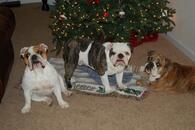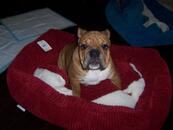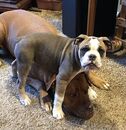I really grilled him about this too. I asked if he ever did a TPLO on bulldogs with their structures being the way they are, and he said that he does have experience with this and has done TPLOs on several bulldogs with great outcomes. He put me somewhat at ease, but I am so nervous putting Lola through this but I know she needs it. I just want her to feel better. Ugh I hear the recovery is the worst, anyone with TPLO experience?
I'm glad you're feeling better about the surgery and your vet, it really helps when you trust and are confident with your vet. I don't have any experience with this type of surgery, but I'm sure someone who has will be along soon to offer you some advice and information.









